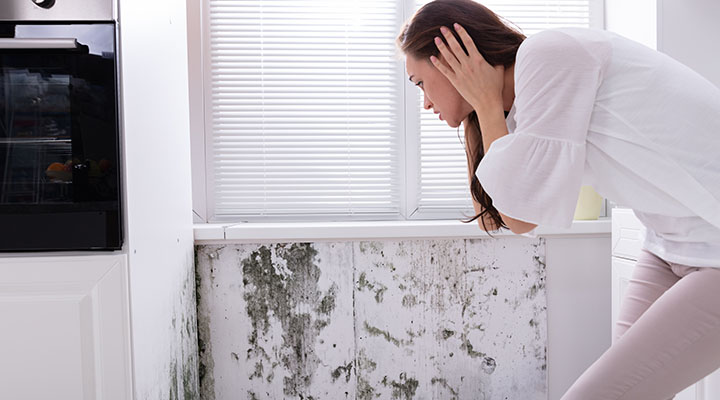Mold Inspection & Testing
Is dangerous mold present in your home?

What is Mold?
Molds are microscopic organisms present everywhere, indoors and outdoors. Molds are fungi which are needed to break down dead material and to recycle nutrients in the environment. To grow and develop, molds need moisture and an organic food source (e.g., wood, paper). Molds grow by digesting organic material, gradually destroying whatever surface they grow on. Visible mold growth is typically discolored green, gray, brown, or black.
Mold is Everywhere
The problem isn’t just that molds grow on surfaces, it’s that molds release countless tiny, lightweight spores, which travel through the air. If indoor mold contamination is extensive, it can cause high and persistent airborne spore exposures. Persons exposed to high spore levels can become sensitized and develop allergies to the mold or other health problems. For some people, a relatively small number of mold spores can trigger respiratory issues; for other persons, symptoms may occur if exposure levels are higher. Whatever the effect, indoor mold growth is undesirable and potentially dangerous.
Health Problems
Molds produce health effects via inflammation, allergy, or infection. Allergic reactions (e.g., hay fever) are common threats of mold exposure. Typical symptoms that mold-exposed persons report (alone or in combination) include respiratory problems (e.g., wheezing, difficulty breathing, shortness of breath), nasal and sinus congestion, eye irritation (burning, watery, or reddened eyes), hacking cough, nose or throat irritation, or skin rashes/irritation.
Resources for More Information:
Why You Need a Mold Test

Mold testing, combined with infrared scans and visual inspection methods, is one of the best non-invasive methods to assess the extent and types of molds in your home. Most people test for mold when they smell an unusual odor, see discolored spots, or become sick for no apparent reason. Because mold growth often is caused or accelerated by moisture, many people also test for mold after a significant water-related property issue, e.g., heavy rains cause water penetration in the basement, dishwasher floods the kitchen, washing machine floods the laundry room, etc.
Testing before remediation helps to establish baseline conditions and the scope of any possible remediation; testing after remediation ensures that the mold has been properly mitigated.
Our Approach
Our mold assessment gives you a comprehensive understanding of the types and extent of mold in your home. We employ a multi-faceted approach to mold testing, including visual examination, air sampling, infrared inspection surface sampling; we ship samples to a qualified lab for results and analysis.
What’s Included
A complete mold inspection includes an inspection for obvious undesirable moisture conditions. The moisture inspection portion for a complete mold inspection includes a non-invasive visual examination of the readily accessible, visible, and installed systems and components of the building.
Complete building mold inspection report will include:
- moisture intrusion
- water damage
- musty odors
- apparent mold growth, or conditions conducive to mold growth
- results of a laboratory analysis of all mold samplings taken at the building
- any system or component listed in the Standards of Practice that were not inspected and the reason(s) they were not inspected.
Complete mold inspection sampling/lab analysis includes:
- two air samples at exterior for comparison use
- one air sample at interior from a frequently used area
- one additional swab, tape or air sample as needed
- samples beyond the four included are at additional fee of $25 per sample
